George Santos told me during an oxygen break at the 23,612-foot elevation on our free-climb ascent of Kilimanjaro, or Fujiyama (Fugaku to gamers), I forget which, “It’s not the lie that gets you,” he then saved a koala from falling into a crevasse before adding, while lighting up a Lucky Strike (our corporate sponsor), “It’s the cover-up.” I let him finish the climb alone, because that statement added too much weight to my already overly ladened conscience. Most guilt lingers from dumb things I’ve performed in my half-century in aviation. So far.
Like in 1975, when I tried to land a Grumman TR-2 (not as macho as it sounds) on Runway 8 at Honolulu International Airport instead of the assigned 4 Left … or Right, I forget. Didn’t matter; I was bore-sighted for the big number 8, despite having acknowledged the other runway. Must’ve been a slow traffic day, because the controller waited until the last second to approve my free-form runway choice, “Hey, Grumman, I said, 4 Left (or Right, whatever)!” This was back when little airplanes mixed with 747s in the polyglot world of international ops and wake turbulence. As a low-time private pilot, I routinely displayed minimal grasp of ATC English. Probably why I became an air traffic controller four years later. Nowadays, the FAA requires flight instructors to verify that students can speak, read and kinda understand English before approving a student pilot application on IACRA, which is an acronym of vaguely English-based words stitched together to confuse pilots and CFIs.
At the time of my runway “incident,” I was an Army E-5 with almost three years of butt-chewings in my 201 file from doing countless stupid things. (Someday, I’ll confess to my first time shooting an M-16, and the drill instructor, who explained with avuncular sensitivity, that I’d “missed the whole (darn) target!”) As for the almost runway incursion, tower controllers are supposed to catch pilot mistakes—a ponderous list of creativity—before tragedy occurs. Numerous highish-tech ways to achieve this exist, but the best method remains looking out the many windows in the tower cab while scanning for unforeseen trouble; much as pilots should.
In my tower career, effortless scanning saved me—and pilots—from embarrassing events, including gear-up landings. One day I missed a scan, and a Beech Baron slid down the runway, curling back its props. In civilian ATC it’s not controllers’ responsibility to verify pilots put the wheels down. Still, it’s a professional courtesy, and I felt like a mook after the unprofessional lapse. In the Honolulu case, where I was lined up on the wrong runway, I now wonder if the controllers were placing bets on how low I’d descend before going around. (FAA click here to express umbrage: paulberge.com.)
That was long ago. Recently, the world is agog over the Chinese balloon lingering at FL500+ with what reporters call “surveillance equipment” dangling beneath. The NAS (National Airspace System or everything up there) is facing yet another threat of inflated hysteria, only this one’s real … in some minds. Speculation says the balloon over Montana (the state, not Hanna) is taking photos of … I don’t know, maybe a secret episode of Yellowstone. Chinese officials, or at least those on Facebook, claim it’s an errant weather balloon. Personally, in an age of intergalactic nuclear weapons in the hands of almost everyone, multilateral finger-pointing over balloons is refreshing. But as Charles Dudley Warner said to Mark Twain in 1897, “Everyone complains about weather balloons but nobody does anything about them.” Until now, when everyone wants to take a pot shot at this one.
Since the American Civil War, balloonists have striven to prove usefulness. And they’ve succeeded with weather and reveal party balloons, thousands of which float through the NAS like errant flatulence. And yes, in 1794 France’s Corps d’ Aerostiers thumbed noses at enemy troops from balloons. The Aerostier pilots were motivated to succeed by their overseers, the—not making this up—Committee On Public Safety. While that sounds like a joint FAA/AOPA runway incursion focus group, it was the name of the unit that enforced guillotine justice. Given the mindset, it was a short hop from political cleansing to weaponizing gas bags. And speaking of gas, the civil war bags weren’t filled with hot air. Instead, iron filings were mixed with sulfuric acid to produce hydrogen gas, which is lighter than air and a better lifter than helium, although not nearly as funny at parties.
Formed in 1861, the Union Army’s Balloon Corps, under Thaddeus S.C. Lowe, lacked the elan of Corps d’ Aerostiers. It was a civilian contract unit, because the Army knew that if left to a bunch of 20-something E-4s and 5s, ballooning would’ve produced more hijinks than strategic value. The first successfully ballyhooed Balloon Corps aerostat to see combat—and that’s literally what the aeronaut onboard did, observed troop movements and telegraphed observations to generals below—was at the First Battle of Bull Run. With amazing foresight, the balloon was named Enterprise, after Captain Kirk’s Star Trek vessel. Wikipedia won’t verify that. The Civil War’s Enterprise passed its name to a 1930s Goodyear L-class blimp, which served in World War II.
Balloons secured Hollywood glam in World War I as all sides dotted battlefield skies with hydrogen-filled targets for American ace 2nd Lt Frank Luke to bust. Luke’s career was short lived (July-September 1918), although it did earn him a Congressional Medal of Honor and his name on Luke Air Force Base stationary and tagged as the lead character in Star Wars.
So, as newscasters foam over the errant balloon, I salute the Chinese for turning back the clock, after having invented it millennia ago. In a world of high-tech everything, everything becomes passe, jejune, or other Gallic put-downs, and we can easily overlook the basics of a harmless prank. I say: Vive le Balloon!
Next week on Rhyming Aviation History: North Korea swaps its ICBMs for gaily festooned Happy Peoples Balloon Bombers.


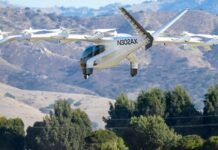
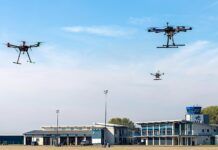

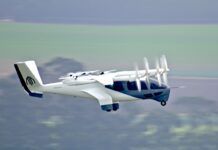





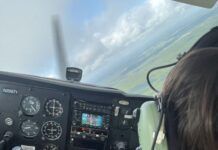



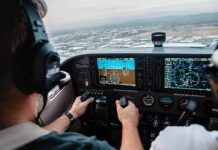


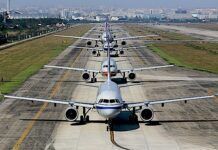
















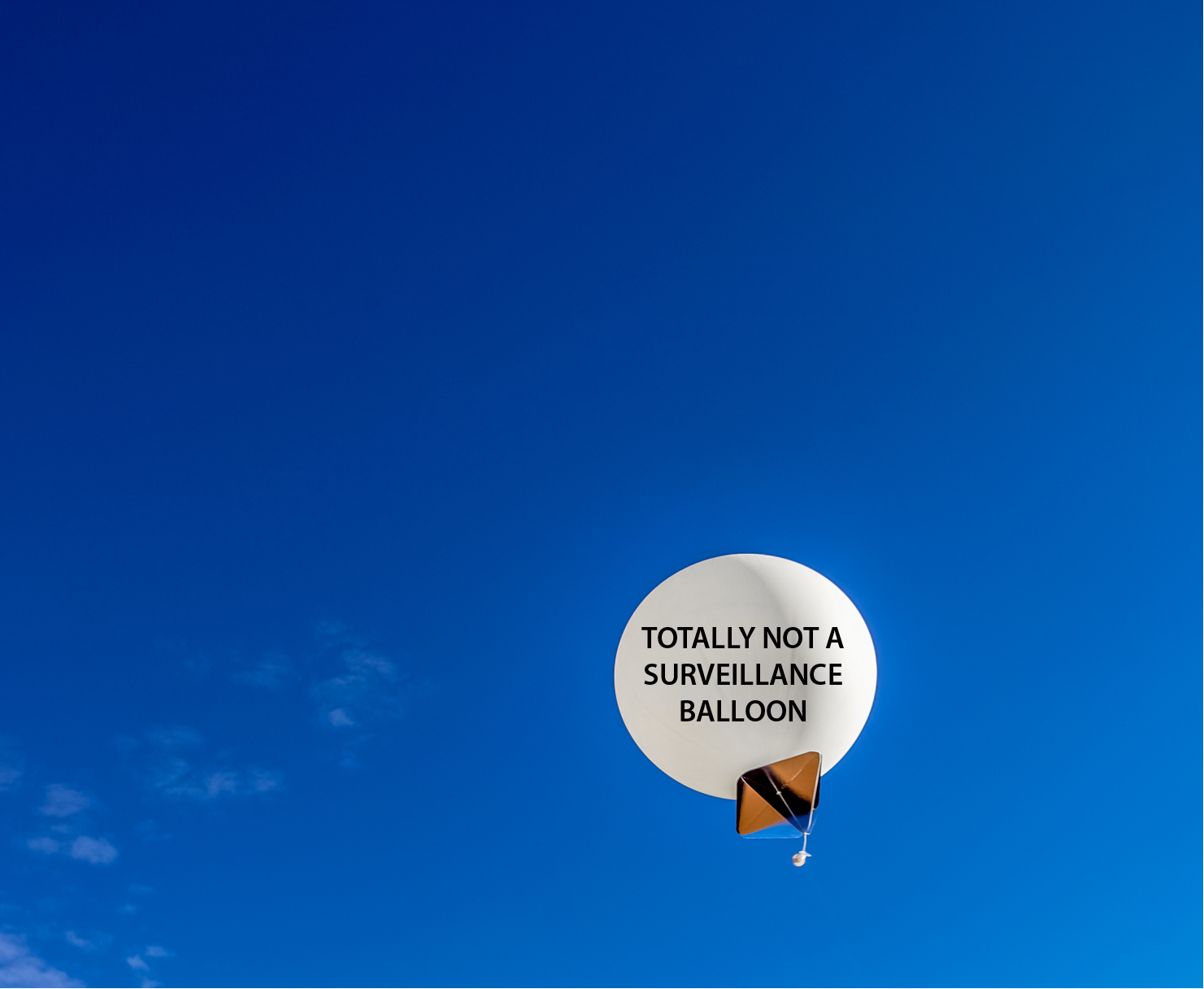

😊😊😊
Instant classic, Paul. Thanks for making light of a situation that so many are taking way too seriously.
Agreed!
Are the words “Happy Birthday!” on the balloon?
I’ll ask the question in reverse. Whaddya think the ChiComms would do if WE sent a huge balloon aloft and it entered their airspace. I know what the Rus did to Gary Powers in 1960.
We all know the answer. So why is everyone suddenly trying to Monday morning quarterback this situation. An air vehicle — who gives a damn what’s hanging under it — that emanated from China entered our airspace. We don’t know what the package is, we don’t know if it’s a “trial balloon’ for a subsequent real mission or really IS a weather balloon. Makes no difference. Numerous airports were negatively impacted, as well. The thing shoulda been shot down over Alaska.
The Washington Post’s digital edition routinely has six columns at the bottom of the news hole. On Thursday, four of these were given over to the Chinese balloon. Lots of bloviating about something had to be done and what an outrage! The frantic reaction struck me as silly and remenscient of the panic over Sputnik.
They were right to shoot it down, because it did violate U.S. airspace and international law. Right to do it over water, too, because I don’t think it’s a good idea to loose an AIM-9 over civilian areas. All it really does is show how clumsy the Chinese are. It puts them in a diplomatic hole, just the U-2 shootdown in 1960 put Eisenhower in the box. It was, of course, a “weather plane” that drifted 2100 miles off course. (Happens all the time.)
I wonder if any of the readers ever heard of the Trojan horse? IF the thing was transmitting encoded info … how the heck are we supposed to know what it’s reporting on? And IF that were so, why would weather info have to be encoded? Personally, I think they were testing the Prez … he passed their test, I’d say?
Or it could be just garden variety incompetence. It’s possible the intel agencies running the balloon fiasco weren’t sensitive to the timing of the coming Blinken visit and just blundered into it.
Eisenhower was similarly blindsided in 1960 ahead of a planned summit with Khrushchev. The record reveals he knew about the U-2 program and may or may not have known specifically about Powers’ flight beforehand. Remember also that during the Cuban missile crisis, the Air Force sent a recon airplane over the pole that had a navigational failure, putting it well into Siberia at the a time of peak tensions. This moved Kennedy to remark, “There’s always some son of a bitch who doesn’t get the message.”
So the other 2 balloons were just “errant” mistakes?
I agree
Holy Lucky Strike! You had me crying after setting the scene in the first sentence – thanks for writing even more hilarity after that Paul! 🤣
Don Quixote rolling over in his grave never felt so gratified as with this episode of yet another windmill to fight and so many devotees eager to acquire title to his namesake. And your climbing colleague George Santos, Paul, ever more dangerous than some silly Chinese balloon is laughing all the way back into his committee assignments now hoping that he’ll be saved by yet another moment in which the nation’s attention is too distracted to discern the difference between what is truly silly and what is truly important.
Well, one thing we did find out from the flood of postings on AV Web is that an awful lot of pilots don’t seem to know much at all about “navigating” balloons.
The panicking “‘Spy’ Balloon” media forgets that the Chinese also have access to Google Earth 🌎 and their own satellites. Don’t think an errant WX balloon 🎈 is going to bring down the U.S.A. security and defenses as well as TicTok and access to ‘secret documents’ in someones garage. Besides, wouldn’t it be cheaper to just take pictures from a plane like the rest of us❓ They own half the U.S. aviation companies.
Klaus, you might be onto something!
I said it was likely a weather balloon before the military confirmed it was a spy balloon. It is kind of funny, China went with that explanation. China doesn’t monitor my posts, but I know the US government does….
Did someone tell China to claim it was a weather balloon? Hmmmmm…
No laughing matter, a loss of a significant intelligence opportunity. Obviously a light-than-air pilot wasn’t consulted. A couple of holes in the envelope with dummy rounds would have allowed a controlled decent with forward speed reduced to 10-15 kt nearing the ground. This would have allowed recovery of the payload intact. Instead, it’s allowed to travel the length of the US, be shot down in headline fashion, fall at terminal velocity shatter in a million pieces, that sink into the bottom of the deep blue sea. Guess way to keep the military gainfully employed searching for debris of intelligence value.
It would have taken much more than “a couple holes”. It’s hard to find details on it because search results are flooded with this recent balloon incident, but apparently in 1998, Canadian F-18s hit an errant weather balloon (it actually was an errant weather balloon) with 1000 rounds of ammo and it stayed aloft for another 6 days.
Apparently the remains of this recent balloon landed in only 47 feet of water, so it will be quite easy to recover it. It seems that they specifically planned to shoot it down over shallow water to make the recovery easier.
Aren’t weather balloons about 10 feet across? This thing had a large gantry suspended below it with what looked like many solar panels. So, it needed quite a bit of electric power for something. My guess is pumps for some altitude control scheme but it could also have been lots of electronics. Cameras are unlikely. There’s not much that hasn’t been seen by other methods. A large installation of electronics would be able to monitor or transmit a variety of radio signals over a long range. Cell phones use radio, Wifi uses radio. The only reason I can think of to use a balloon to fiddle with that stuff would be a need for long dwell time. Maybe to talk to all those infected devices we use every day. As far as loitering over specific places, lots of wind up there. Very limited maneuverability or control.
Wiley… you are not.
(And China is who we created it to be. It’s Russia that is our greatest threat. We owe too much money to China for them to want to sink us. Thank you Nixon and corporate America.
MY points precisely, Wiley. It IS a big deal AND our limp reaction TO it is, too! Shoot down debris safety coulda been accomplished over Alaska.
… and a military that doesn’t immediately act on the Commander-in-Chief’s order to shoot it down. Really !! What’re they gonna do when an ICBM is headed our way. Maybe they’re worrying about which pronoun to use? I’m sure a committee had numerous meetings before they acted, too. The Chairman of the Joint Chiefs, et al, need to go!
I’m sure there’s much more to the story. I’d want to know if the data stream was encrypted. I’d want to know if we tried to jam the signal stream. I’d want to know what sort of data a balloon launched from the east end of China with huge solar collectors — knowing the prevailing winds would carry it as it did (they probably have supercomputers figuring its trajectory) — is supposed to collect? Lot’s of questions … some are likely known and not being shared?
Congressman Mike Waltz of FL just hit the head on the nail. He said, “This is a ‘Sputnik’ moment for US – Chinese relations.”
Well duh, of *course* it’s a big deal. It doesn’t even matter what may or may not have been hanging from this balloon. The point is that the Chicoms are pulling the same stunt they’ve been doing with Taiwan lately, sending their navy and air force ever closer on a daily basis without actually “doing” anything.
The real intelligence they got is in discovering just how much they can get away with before provoking a response. Two year-olds have been doing this to mommy for centuries.
Wiley, while the government narrative media has all your attention staring at the sky the real “SPY Balloon” is in Washington D.C. called “FAIR Trade”:
https://www.avweb.com/insider/the-china-chickens-come-home/
Just like the technology “sharing” of the International Space Station (ISS) with Russia. I’m still waiting to see the benefits to the United States from the “sharing” of technologies.
Fair Trade is not capitalism. Fair Trade by design levels the playing field like socialism. FREE Trade is an auction to the highest bidder. Free Trade is capitalism. The elected officials in D.C. are supposed to control who is even allowed to bid. China and Russia should not be on the invitation list to the auction. Instead they are given front row seats. 😠
“It is astounding to see the stupidity of some of you people…Paul is completely full of %#*!”
Which Paul? You just might set off a debate there unintentionally, ya know, if you left that unanswered…
Nonetheless, if you really want to enlighten those (or just pretend for a moment one would) ‘too stupid to help’ or cleanse the waste from others, maybe try writing a witty, brilliant blog like the one you and others are hijacking here with dreadful solemnity, because you’re illustrating precisely what the blog delightfully was about. I’d read it…
‘Vive Le Balloon!’ or as some might prefer, ‘Go Fly A Kite!’
Like I said. Some people clearly aren’t smart enough to understand that letting a foreign power operate in your airspace means you have no sovereignty. And I meant Paul Berge. The guy who deletes posts because he cannot defend his position.
It’s amazing to me how many people just laugh this off. Consider how many times we as a country and our government have been caught with heads up their behinds ignoring obvious warning signs. How many Americans have died in the past because of ignoring warning signs. Pearl Harbor mean anything? How about 9/11? Obviously the government Cabinet department reorganization after 9/11 was a wasted effort. What ever happened to “Homeland Security”? Or the office of national intelligence?
I don’t think it’s fair to make fun of Congressman Santos, turns out he was piloting the F22 that shot down the ballon.
How about reversing the standard government analysis when a UFO is reported. They should identify it as they have traditionally. Instead of calling it a weather balloon or swamp gas or ball lightning (project Blue Book lingo), they should have identified it as a flying saucer.
The reluctance to shoot it down sooner for being afraid of falling debris, is nonsense. Anyone look at the demographics of the path across Alaska, or the upper US where hardly anyone lives? One has to again question the qualifications and performance of Biden and his woke military flunkies for fumbling another urgent decision.
A note on commenting here: All are free to do so and we encourage it. I have a pretty thick skin and don’t delete many. But when you have to make your point by calling people stupid or names, I’m gonna trash the comment.
There’s no need for this. Please keep it civil.
Apparently now it has been stated by Pentagon Officials that the American military had a “domain awareness gap” that allowed three other suspected Chinese spy balloons to transit the continental United States undetected under the Trump administration, the Pentagon general responsible for providing air and missile defense over North America said on Monday.
If true the Pentagon leadership will have a lot more explaining to do!
and … there it was… inbound … carrying 11,000 votes… for Trump in Georgia…
“domain awareness gap”
Wish I thought of that to say on those first awkward dates…
😊😊😊
My workmate who is the Intell Officer with the 187th shared this: https://www.thedrive.com/the-war-zone/why-shooting-down-chinas-spy-balloon-over-the-u-s-is-more-complicated-than-it-seems
You realize the unspoken assessment in that article is that China can float a whole lot of nukes or EMPs or biological weapons over America and they won’t be detected and we don’t have a way to shoot them down, right? Well written. Not good tho.
Some members of Congress are among a chorus of individuals vocally calling for it to be taken down, but, as noted earlier, this is easier said than done.
The most immediate issue is just how high the balloon is flying. When the possibility of shooting it down over Montana was considered on Wednesday, F-22 Raptor stealth fighters were sent all the way from Nellis Air Force Base in Nevada, more than 700 miles away. Sending F-22s was likely a necessity more than a choice, as the Raptor operates at higher altitudes than any other U.S. fighter, with around 65,000 feet being its maximum ceiling. This is critical for collecting visual intelligence on the balloon from aspects other than just below. In regard to their ability to intercept the balloon and take it down, the F-22 carries three air-to-air weapons: the AIM-9 Sidewinder heat-seeking missile, the radar-homing AIM-120C/D Advanced Medium-Range Air-to-Air Missile (AMRAAM), and its internal 20mm M61 Vulcan cannon.Using air-to-air missiles like the F-22’s specifically against balloons this one would be a challenge. This is because high-altitude balloons, despite being massive in some cases, can have a remarkably low signature, which creates guidance problems for missiles.
“[Balloons] have extremely small radar and thermal cross sections, making them relatively invulnerable to most traditional tracking and targeting methods,” read a report published by the Airpower Research Institute. “Estimates of their radar cross sections are on the order of hundredths of a square meter, about the same as a small bird. They also tend to move very slowly compared to traditional airborne targets, almost drifting on the wind similar to the chaff that modern Doppler radars are designed to ignore.”
In many cases, radars use Doppler shift — the movement of the target in relation to the sensor — for detection. If something is moving very slowly, the radar will either not detect it or actively filter out the target, depending on its mode and capabilities.The kinematic aspects of using a missile to engage such a balloon are also dubious. If a guided missile was to successfully lock on to the balloon and carry out an attack, there’s a chance that the weapon could just whiff through the envelope and continue on its trajectory. While this would still puncture the balloon’s envelope, it won’t necessarily drop it out of the sky.
Most air-to-air missiles are not intended to destroy their target by physically smashing into it. They are instead generally designed to detonate their warhead via a proximity fuze, which is basically a radar or laser system that senses when something of sufficient size is nearby and allows the missile’s blast fragmentation warhead to detonate without the need for a direct hit.
Without solid material to trigger its proximity fuze, like a balloon is unlikely to do, this would leave the missile flying dumb through the atmosphere. Radar fuze systems are likely to be more problematic than laser types under these conditions. Regardless, firing missiles at an aerial target over the homeland outside of test or training events that occur under very controlled conditions is largely unprecedented and risks exist any time a missile is fired, regardless of the circumstances. These include it simply not igniting and falling to the ground below.
The idea that F-22s could release hot flares above the balloon, with them drifting down over it and destroying its envelope has also been raised. While that’s an interesting idea, the height and speeds involved would make doing so challenging and the balloon would still fall down to earth.The kinematic aspects of using a missile to engage such a balloon are also dubious. If a guided missile was to successfully lock on to the balloon and carry out an attack, there’s a chance that the weapon could just whiff through the envelope and continue on its trajectory. While this would still puncture the balloon’s envelope, it won’t necessarily drop it out of the sky.
Most air-to-air missiles are not intended to destroy their target by physically smashing into it. They are instead generally designed to detonate their warhead via a proximity fuze, which is basically a radar or laser system that senses when something of sufficient size is nearby and allows the missile’s blast fragmentation warhead to detonate without the need for a direct hit.
Without solid material to trigger its proximity fuze, like a balloon is unlikely to do, this would leave the missile flying dumb through the atmosphere. Radar fuze systems are likely to be more problematic than laser types under these conditions. Regardless, firing missiles at an aerial target over the homeland outside of test or training events that occur under very controlled conditions is largely unprecedented and risks exist any time a missile is fired, regardless of the circumstances. These include it simply not igniting and falling to the ground below.
The idea that F-22s could release hot flares above the balloon, with them drifting down over it and destroying its envelope has also been raised. While that’s an interesting idea, the height and speeds involved would make doing so challenging and the balloon would still fall down to earth.
When it comes to surface-to-air missiles (SAMs), the options are even more limited. Basically, due to the altitudes involved, the Patriot air defense system would be the only system set up to do this. However, once again, achieving a lock on the balloon could be an issue for the Patriot’s radar and its interceptor’s radar seeker — the same issues apply to air-to-air missiles. Also, outside of training and limited testing, there are no active Patriot batteries in the U.S., and those that are available take time to move and set up.
Swatting a balloon down via aerial gunnery may seem like a much more attractive option, but it is also problematic.
Firing at a balloon with a fighter’s 20mm M61 Vulcan cannon invites significant levels of risk based on a number of factors. That is if the fighter can get within range of employing its gun effectively at all. The altitude is, once more, a huge factor, and getting above the balloon to engage it would be very important when it comes to mitigating risk. Here is where the F-22’s high-altitude capabilities would be critical, but even then it might be too high to execute a gun run without major risk. The aspect of the shot is key.
If the fighter can’t fly well above the balloon, a gun run would leave explosive cannon shells flying for miles on a ballistic arch, impacting a wide area below. The shells would still likely impact the ground if the fighter was able to make an attack from above on the balloon, but where they would land could be better controlled and more accurately predicted. Such a gun run at these very high altitudes, literally at the top of the aircraft’s operating envelope, is also problematic as maneuverability is greatly decreased the higher a fighter climbs.
As for the cannon rounds themselves, they would only likely cause small holes to be poked in the balloon’s massive envelope. Even high-explosive shells often carried by fighters on operational missions are triggered by a contact fuze designed to detonate by hitting something of substance, not the thin skin of a balloon. Training or armor-piercing rounds could be used, which could help minimize the destruction of the errant shells, but it would not fully alleviate the risk as their kinetic energy alone is still highly dangerous.There is a historical precedent for all of this, as well. In 1998, a rogue weather balloon from Canada deployed to measure ozone levels accidentally drifted away. BBC reported at the time that the airship was the size of a 25-story building and was operating at an altitude between 27,000 and 37,000 feet, so admittedly much lower than China’s balloon is now.
The incursion prompted attempts from Canada, the United Kingdom, and the United States to shoot it down, with two Canadian Air Force CF-18 Hornet fighters firing more than 1,000 rounds of ammunition from their own Vulcan cannons into the balloon off the coast of Newfoundland. That balloon took days to come down, at one point even gaining altitude and drifting across Canada and then out over the Atlantic Ocean, which made for a problematic situation for regional air traffic.
No such thing as a “Congressional Medal of Honor” Paul, “Medal of Honor” yes.
Paul:
OMG. You have outdone even yourself. You owe yourself a drink of Hydrogen.
Best
Vince Massimini
Kentmorr Airpark MD (3W3)
I’m hearing that two U-2’s from Beale AFB were shadowing the thing and retransmitting the datalink info to the ground. IF that’s true … maybe that’s why it was left aloft … so they could try to figure it out. But IF the thing was transmitting encrypted, it’ll take a long time to decipher that IF ever.
Paul, I’d love to run into you at a cocktail party.
I took the time to read all the comments. Very interesting and enlightening. Thanks to all!
https://www.washingtonpost.com/national-security/2023/02/09/chinese-balloon-surveillance-program/
Just what everyone figured: SIGINT capability. I wonder if they got anything useful out of it because now, they’ve probably lost the program as an asset. If I were in charge, I’d bundle all the crap together and send it back to China on another balloon and see if they can shoot it down. I’d put a transmitter aboard streaming old Laverne and Shirley episodes.
Would other legally purchased Chinese assets within the U.S. suspected of being part of China’s SIGNIT Network be subject to your balloon return goods policy?
US blacklists 6 Chinese entities over balloon program
“The United States on Friday blacklisted six Chinese entities it said were linked to Beijing’s aerospace programs as part of its retaliation over an alleged Chinese spy balloon that traversed U.S. airspace.
The economic restrictions followed the Biden administration’s pledge to consider broader efforts to address Chinese surveillance activities and will make it more difficult for the five companies and one research institute to obtain American technology exports.
The move is likely to further escalate the diplomatic row between the U.S. and China sparked by the balloon, which was shot down last weekend off the Carolina coast. The U.S. said the balloon was equipped to detect and collect intelligence signals, but Beijing insists it was a weather craft that had blown off course.” ABC
abcnews.go.com/Business/wireStory/us-blacklists-6-chinese-entities-balloon-program-97051004
Ah, “errant flatulence“ is keeping me awake!
Oh? So you’re Ballooning up a bit? This intrusion on your bodily sovereignty keeping you Up at night?
Tired of mindlessly Floating to the facilities hour after hour?
GasX will Shoot down the invader with calming relief so you can get a restful nights sleep to perhaps dream of peaceful meadows, with the sky filled with colorful hot-air…
If I don’t want to be a ‘conspiracy theorist’ and rock the boat. What am I to believe about the balloon that was shot down off the U.S. Carolina coast?
Was it an errant weather balloon or a Chinese high tech secret surveillance spy balloon or was it a practice run for an EMP device attack? 😕
Hobby Club’s Missing Balloon Feared Shot Down By USAF
https://aviationweek.com/defense-space/aircraft-propulsion/hobby-clubs-missing-balloon-feared-shot-down-usaf